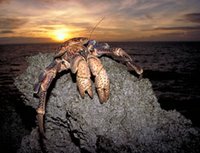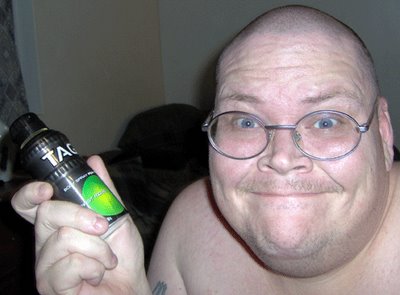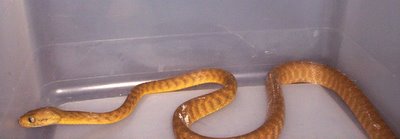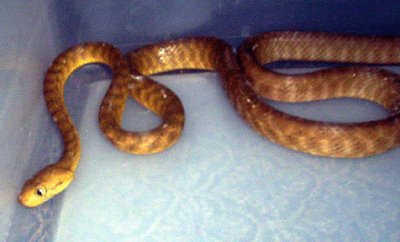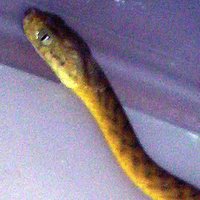It was pretty obvious to me from my last post that the coconut crab — ayuyu in Chamorro — was at least somewhat interesting to some of the regular readers.
Because of that, I've decided to bring you a little more information about this very unique land crab.
Know, as much as I like to be the expert about my island home and all of its flora and fauna, especially the very cool beasties that are within Guam's environs, my knowledge on the coconut crab was limited to personal experience (not very much, unfortunately), stories and information relayed by my dad when he was alive and other relatives, and just the miscellaneous stuff I've learned over the years.
 Thankfully, we have this magical thing called the Internet, and you can find out all kinds of stuff on just about anything of which you can imagine.
Thankfully, we have this magical thing called the Internet, and you can find out all kinds of stuff on just about anything of which you can imagine.First stop: Wikipedia, the online free encyclopedia. Those who haven't used this site, well, now you know about it. There's some very good stuff here, and they're updating and expanding it pretty much daily.
Here's some information about ayuyu from Wikipedia:
The coconut crab (Birgus latro) is the largest terrestrial arthropod in the world. It is a derived hermit crab … known for its ability to crack coconuts with its strong pincers in order to eat the contents. It is sometimes called the “robber crab” or “palm thief” because some coconut crabs steal shiny items such as pots and silverware from houses and tents.
Reports about the size of Birgus latro vary, and most references give a weight of up to 9 pounds, a body length of up to 16 inches, and a leg span of 3 feet, with males generally being larger than females. Some reports claim weights up to 37 pounds and a body length of 3 feet.
They can reach an age of up to 30 to 60 years. The front-most legs have massive pincers used to open coconuts, and these claws (chaelae) can lift objects up to 64 pounds in weight.
I've never seen one as big as 3 feet and weight 37 pounds, but I have seen 10-pounders before; they used to be a lot more prevalent.
And I can testify to the power in those front claws. Once, when I was a child, me and some of my cousins who were about the same age were at a relatives house. There was going to be a huge fiesta the next day, so the day before was tons of prep work, mostly for the adults. We were aggravating some big ayuyu that were temporarily in these big 50-gallon steel drums (one end of each drum was open and they were sitting up vertically). We all had broomsticks and the like, and were poking at them. My broomstick was suddenly violently grabbed, and just as suddenly came loose. I pulled it up to find the bottom foot of it chopped off by ayuyu claw. Yowza.
Another great Web site is The Coconut Crab, which is based out of Great Britain and part of Operation Wallacea, which is "a series of biological and social science expedition projects designed to underpin the achievement of specific wildlife conservation aims." Lot of great information on this site, including eating, drinking and mating habits, among others.
Also, it came with this list of countries and territories — mostly small tropical islands — from the Indo-Pacific region in which you can find coconut crabs. This was cool because I always thought the ayuyu was pretty much indigenous to Micronesia. Here's the list:
Guam • American Samoa • Australia • British Indian Ocean Territory • Christmas Island • Cook Islands • Fiji • French Polynesia • India • Indonesia • Japan • Kiribati • Malaysia • Marshall Islands • Mauritius • Federated States of Micronesia • Nauru • New Caledonia • Niue • Northern Mariana Islands • Palau • Papua New Guinea • Philippines • Samoa • Seychelles • Solomon Islands • Taiwan • Tanzania • Thailand • Tokelau • Tonga • Tuvalu • Vanuatu
In all of these islands, native inhabitants consider coconut crab to be a delicacy — because it is; it just tastes sooooooo good! The problem has been vast overharvesting of the species, especially of the longer-lived giant ones, which has resulted in their extinction or at least endangerment in many of the islands listed above.
 This photo has been included to give you a better sense of how big these things can get. This is an average size guy holding up one of the bigger beasties. These things can get freaking huge!! LOL
This photo has been included to give you a better sense of how big these things can get. This is an average size guy holding up one of the bigger beasties. These things can get freaking huge!! LOLLucky, they are far from aggressive. They will retreat from people and other predators until they can back their backsides into a rocky hole, leaving them free to defend themselves with those amazing front claws.
Random Guam Fact Of The Day:
• The preferred way of eating coconut crab on Guam involves keeping the crabs for a couple of weeks, feeding it nothing but coconut meat. This cleanses the crabs' system so the meat will taste best. Then it's cooked in coconut milk to further accentuate the taste. Mmmm ....


